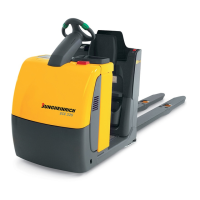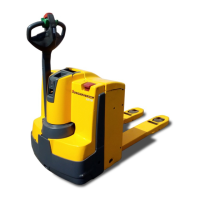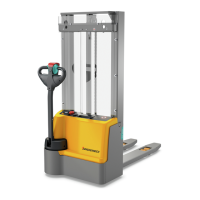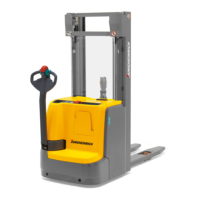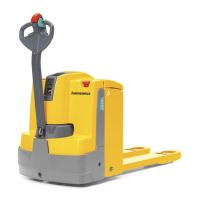4.7 Brakes
WARNING!
Accident risk while braking
The truck’s braking response depends largely on the floor condition and the type of
surface. The truck’s braking distance increases when the ground is wet or dirty.
u
The operator must be aware of floor conditions and take them into account when
braking.
u
Brake with care to prevent the load from slipping.
The truck can brake in three different ways:
– By using the service brake (brake zone B).
– With the coasting brake.
– By inversion braking (braking and changing direction).
CAUTION!
u
In hazardous situations, swing the tiller to the brake position or press the
emergency disconnect switch.
4.7.1 Braking with the service brake
Procedure
• Move the tiller (12) up or down to one of the brake zones (B).
The truck brakes to a halt regeneratively via the service brake.
Z
When braking regeneratively, energy is returned to the battery, ensuring a longer
service time.
4.7.2 Braking with the coasting brake
Procedure
• If the travel switch (9) is set to (0), the truck automatically brakes regeneratively.
The truck brakes to a halt regeneratively via the coasting brake.
Z
When braking regeneratively, energy is returned to the battery, ensuring a longer
service time.
80
04.19 en-GB
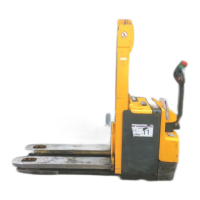
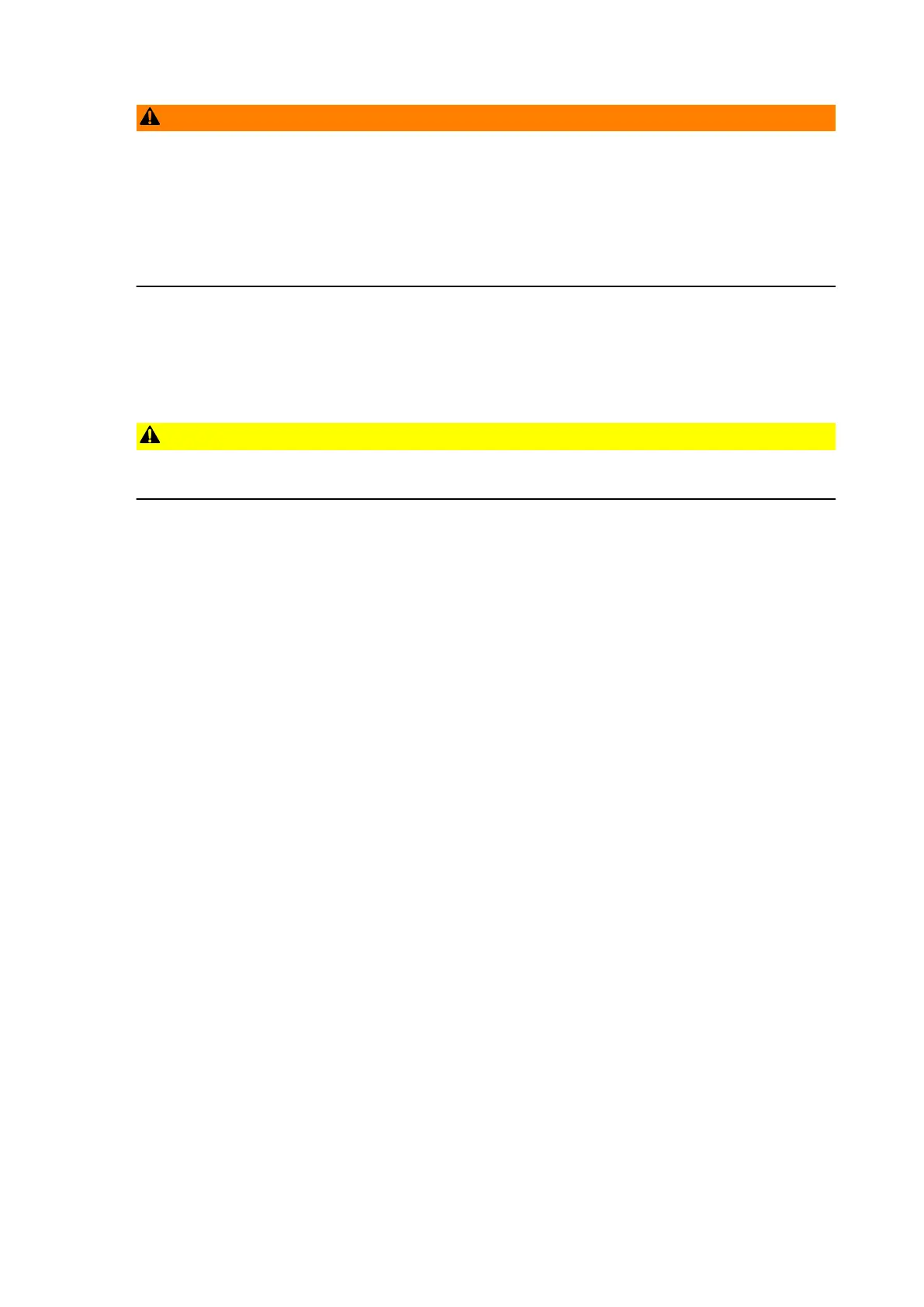